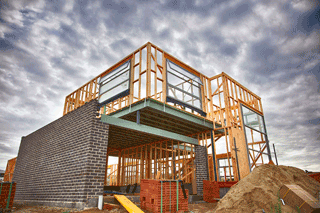Quote of the Week
“Lending to property investors has been below its long-term average since early 2017. Banks have charged investors higher interest rates, we’ve had credit-growth limits on investor lending, state governments have put up land tax and all of this combined has seen fewer investors entering the market but also more investors exiting the market.”
Cameron Kusher, PropTrack
Arrivals Boost Business, Property
 ABS figures show the number of people arriving in Australia is quickly recovering since February when the international border opened.
ABS figures show the number of people arriving in Australia is quickly recovering since February when the international border opened.
There were 1.2 million arrivals in December, the highest since the reopening. Westpac economist Ryan Wells noted that arrivals and departures have already exceeded 50% of their pre-Covid levels, with the three-month average growth rate for arrivals being 11.4%.
Wells also noted that net arrivals among key visa categories have shifted from net outflows to a historic recovery, especially among temporary workers and students.
The Federal Government’s official forecast for net overseas migration assumes 235,000 in 2022-23. Wells said the evidence suggests this number would be exceeded.
Property Investors Council of Australia chair Ben Kingsley says stronger immigration will add to housing demand. However, he also noted that many new immigrants will have building trades, which could put downward pressure on the cost of new home construction.
Rental markets are facing unprecedented pressure due to a combination of increasing demand and insufficient supply.
Rental Markets To Get Tighter
 Rental markets are expected to become even tighter in 2023. A new report from PropTrack finds that enquiries per rental listing are up 31%, while the number of available listings has decreased 26% compared to the same time last year – the lowest they’ve been since 2003.
Rental markets are expected to become even tighter in 2023. A new report from PropTrack finds that enquiries per rental listing are up 31%, while the number of available listings has decreased 26% compared to the same time last year – the lowest they’ve been since 2003.
The biggest decreases were seen in Sydney and Melbourne, while regional markets have seen a slight easing of demand, with total rental listings increasing 9.8% year-on-year.
Rents in both capital and regional areas have increased, with a 10% annual rise in capital cities and 7.1% in regional areas.
Experts suggest that the most effective way to ease rental pressures is to encourage investors to buy rental properties. Shaun Bond, an economist from the University of Queensland, says corporate investors could also play a role in alleviating the current pressure in the rental market.
“This is the build-to-rent market, where large investors build apartments that could be rented out,” Professor Bond says. “That would help bring on large supply relatively quickly.”
Shortage Looms As Building Slows
 The construction industry in Australia is facing a slowdown in new building activity due to rising construction costs, adding to the severe shortage of rental properties and putting further upward pressure on rents.
The construction industry in Australia is facing a slowdown in new building activity due to rising construction costs, adding to the severe shortage of rental properties and putting further upward pressure on rents.
The latest ABS data shows total dwelling starts fell 5.2% in the September 2022 Quarter, while private sector house starts dropped 4.9%. Building approvals also dropped 9% in November.
Master Builders Australia forecasts that new home building starts will drop below 200,000 a year and CEO Denita Wawn says the industry is facing a “bumpy road” in the coming years.
The combination of labour shortages, material shortages and volatile energy prices is making it difficult for the industry to deliver on its housing targets. The national rental vacancy rate is currently around 1%, which drove up rents 22% since September 2020.
Wawn says measures such as making it easier for migrants to work in Australia could help address the labour shortage and ensure the industry can meet its targets.
Big Savings For Loan Re-financers
 Borrowers in Australia are refinancing their mortgages at record rates as repayments become more expensive. Before making the switch, experts suggest that borrowers contact their current lender to negotiate a better rate.
Borrowers in Australia are refinancing their mortgages at record rates as repayments become more expensive. Before making the switch, experts suggest that borrowers contact their current lender to negotiate a better rate.
An analysis by RateCity showed that a borrower with a $1 million mortgage could save $29,800 over three years if they got a 1% reduction in their rate.
Even a 0.25% cut could save $7,466 over three years. Pure Finance managing director Brendan Dixon encourages borrowers to make a phone call to negotiate a better interest rate, as they can easily save thousands of dollars.
In the 489 reviews conducted by the company in 2022, the average discount was 0.26%, which worked out to a saving of $101.65 per month.
“The scope of savings depends on how big the loan is and how bad the interest rate is,” says Dion. “But it would be pretty easy, if they took a loan out two years ago, to save thousands rather than hundreds.”
Mortgage “Cliff” Claims Overstated
 Despite media claims of a mortgage “cliff” leading to a drastic drop in consumer spending, recent evidence suggests that the impact of higher interest rates on the Australian economy will be minimal.
Despite media claims of a mortgage “cliff” leading to a drastic drop in consumer spending, recent evidence suggests that the impact of higher interest rates on the Australian economy will be minimal.
According to a report by investment bank Citi, only 4% of households are expected to be affected by the rollover from lower fixed rates to higher variable rates, with most of these households in the higher income brackets.
Furthermore, households are better placed to manage the transition due to higher savings rates.
Finally, the report determined that the impact of travel spending normalizing could be more of a threat to retailers than the mortgage cliff.
All in all, the evidence suggests that the fear of the mortgage cliff is “overstated” and the impact of rising interest rates on the economy will be minimal.
“Low to middle income earners facing the so-called mortgage cliff represent only around 4% of all households,” says Citi analyst Adrian Lemme.




